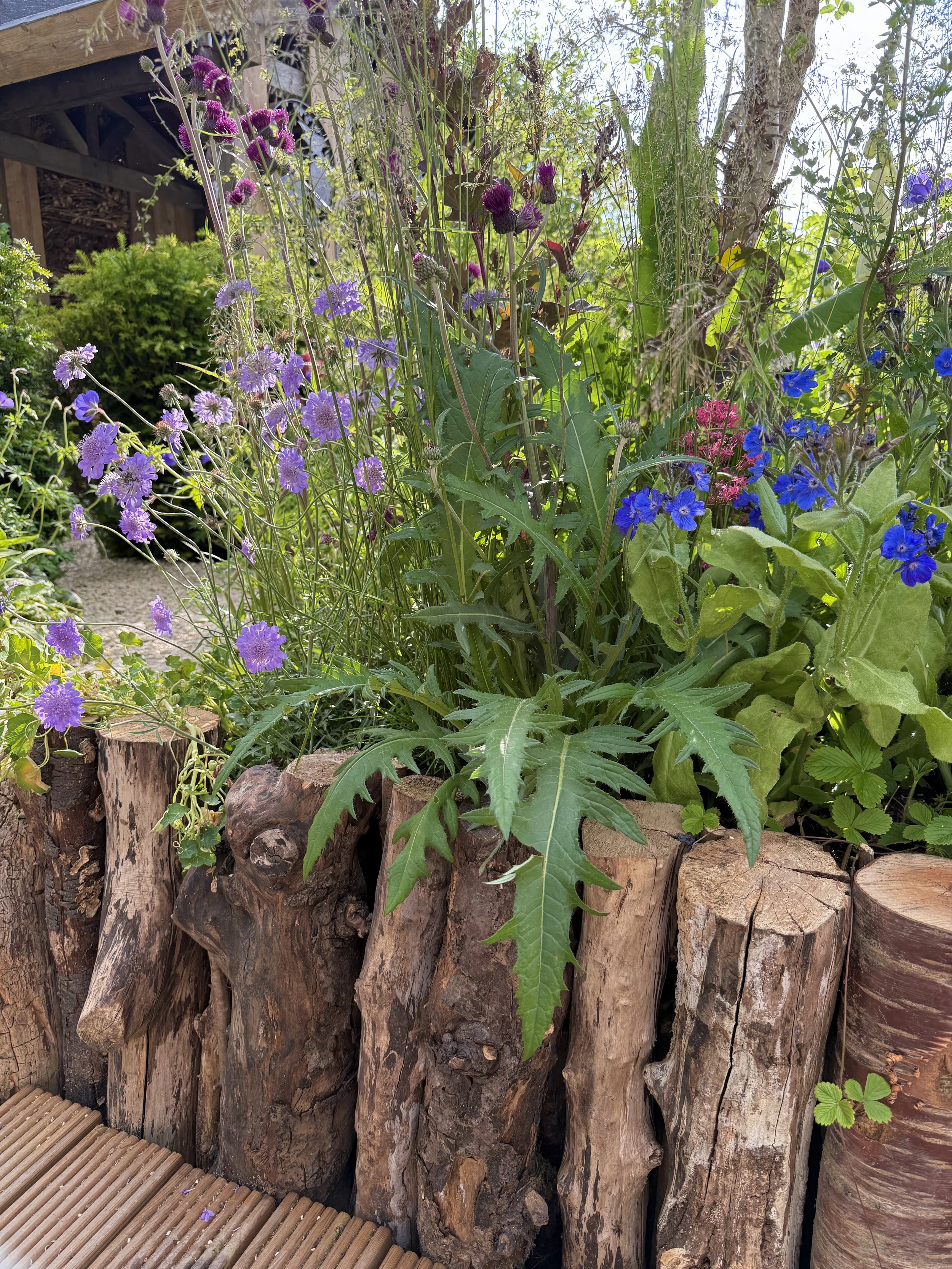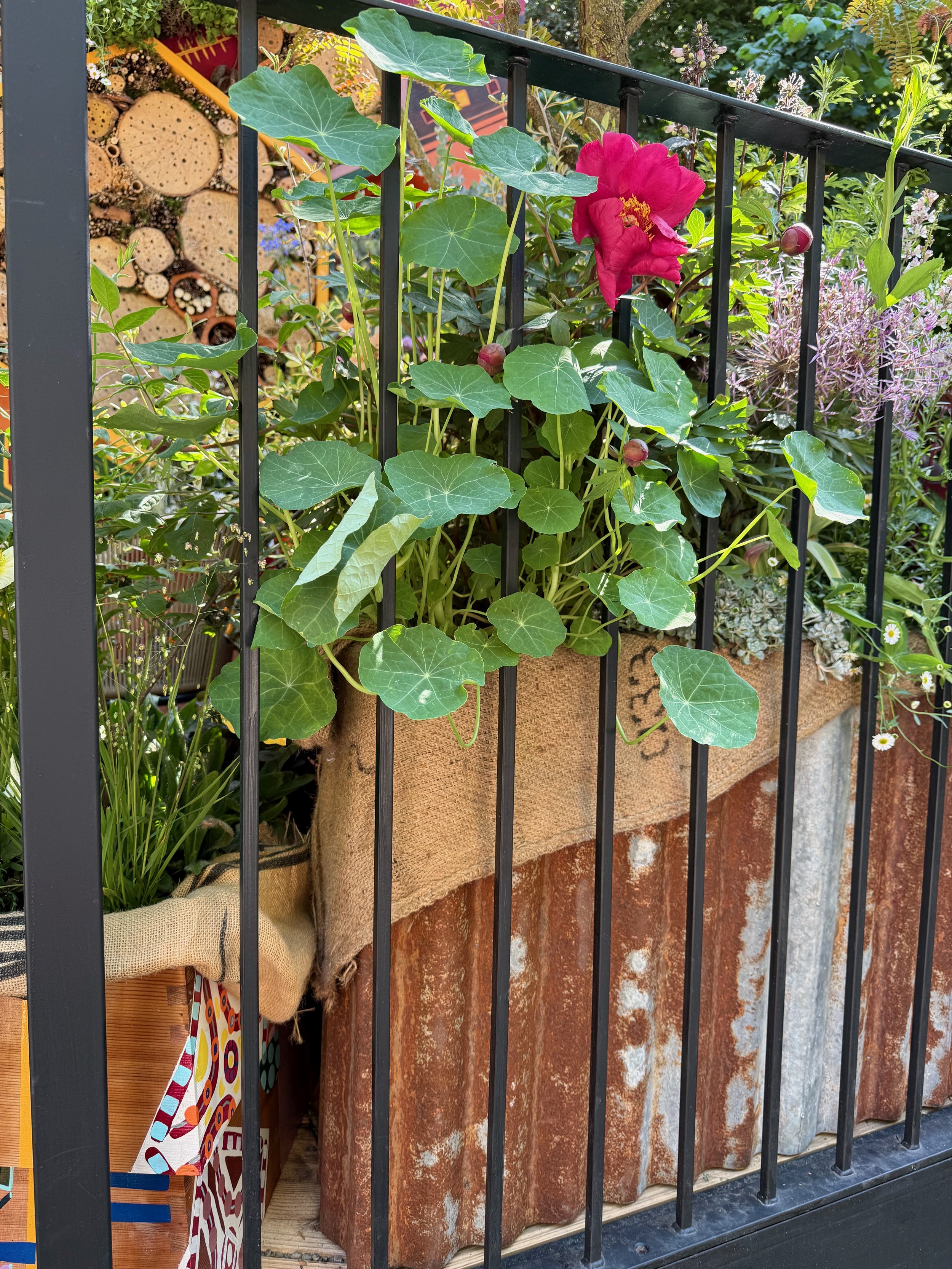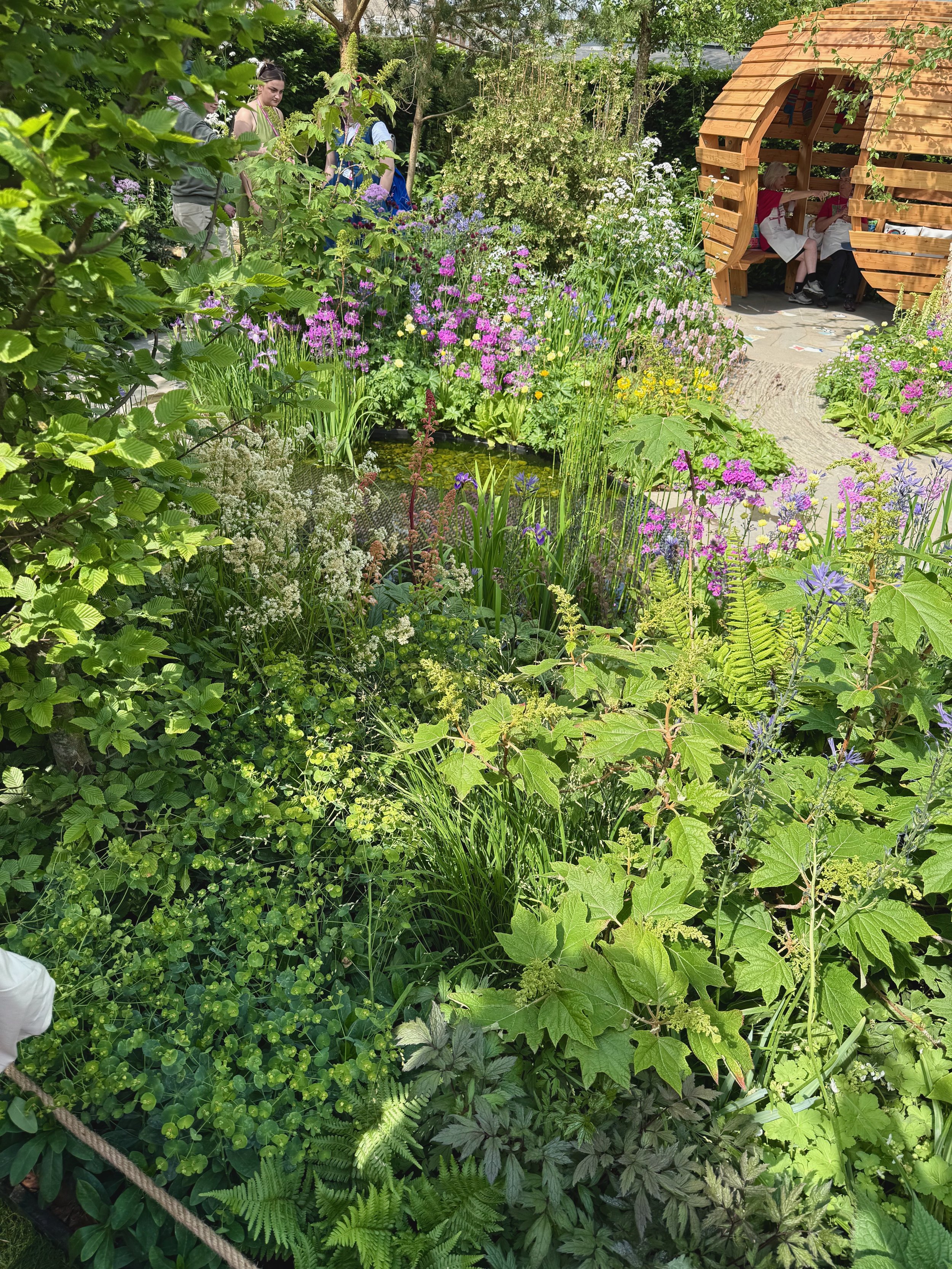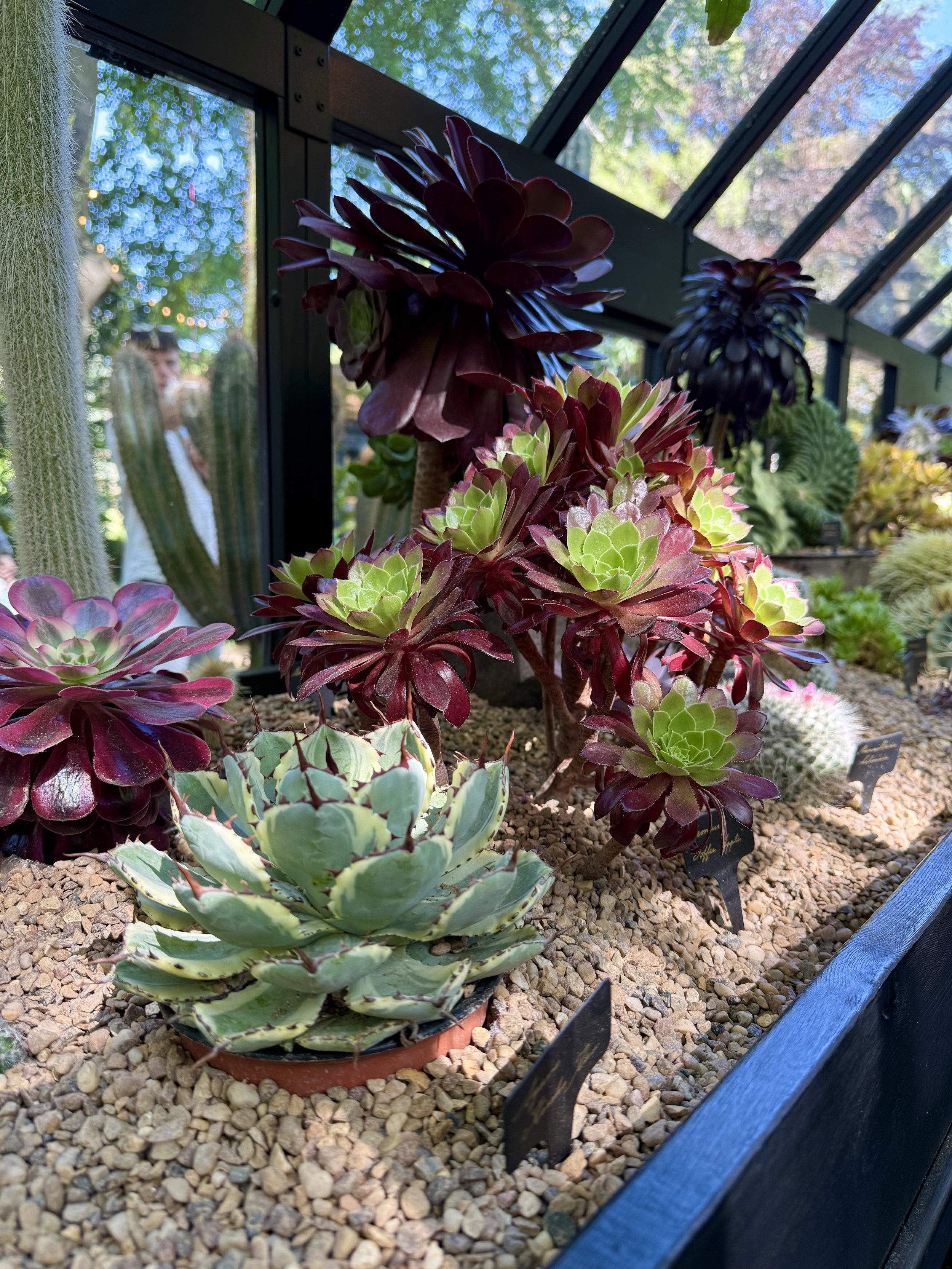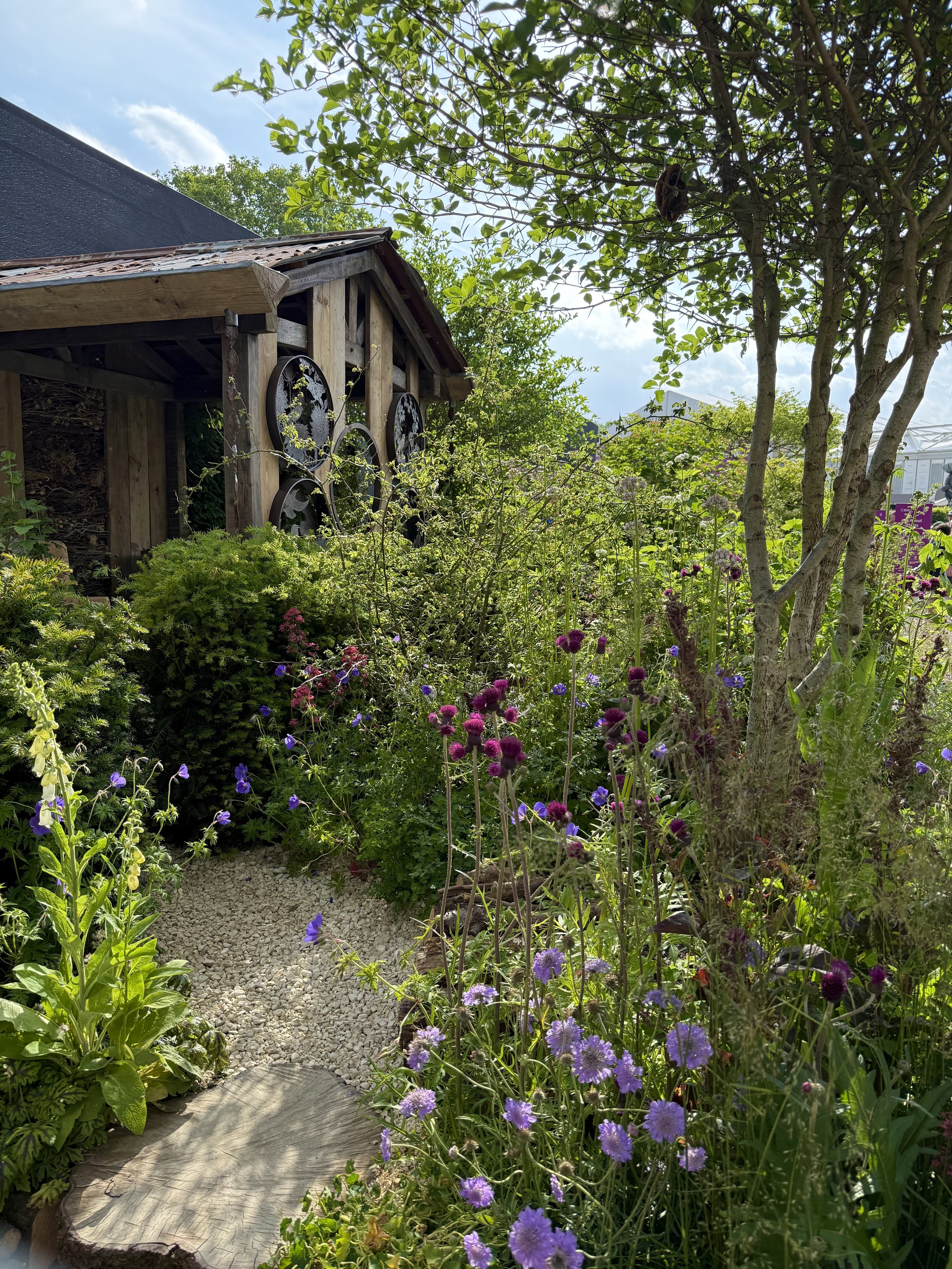Garden Design Inspiration
Creative Plant Choices to Elevate
Your Yard or Garden Design
from the 2025 Chelsea Flower Show
This is part of a series about design ideas from the 2025 Chelsea Flower Show.
You’ll find all of my posts here.
Fresh Garden Plant Choices: Creative Ideas to Transform Your Outdoor Space
Careful observation at the Chelsea Flower Show offers a masterclass in the principles of great garden design. And the herbaceous plantings took my breath away. As a reminder: herbaceous plants are those that die back completely in the winter. If they are perennial, they reemerge in the spring. If they are annual, they will have completed their lifecycle in a single season (Need a refresher? Check out this post).
Herbaceous borders are an important part of British garden design, and perhaps nothing distinguishes the average British garden from its American counterpart more. We sometimes refer to an English Country Garden aesthetic or style, and that is a real thing, but the principles of an English Country Garden are found in many British gardens — country or not.
There were several critical design principles apparent in the show gardens — and in the plantings around the vendor areas as well — all of which are worth noting.
Dense Planting Schemes
If there is one word to describe the Chelsea Flower Show it is “abundance.” Of course, part of this is for impact and competition, but it is also a foundational piece of British garden design. That hallmark of American landscaping — bare bark mulch interspersed with a few plants — would never fly here. Plants are packed in, rubbing shoulders like the flower show crowds themselves.
But there is a method to this melee — bare ground is an invitation to weeds. And dense plantings squeeze out the weeds. So what we see as an English Country Garden look is actually the lower-maintenance garden that so many seek. More plants means less weeding — provided they are perennials which come back year after year. So ignore those spacing guidelines, and plant densely. And if perennials are too pricey, start with a few perennials to create a structure and then layer in annuals and seeds to save money.
What You Can Do at Home
Consider your planting areas. Are there bare spots? That's an opportunity for another plant! Whether you are growing from seed or buying at the garden center, consider adding some texture, some color, some height, and cram them all together. Obviously, more plants is more expensive at the outset. But you can add more and more over time. Gardens evolve over years, afterall.
One great place to start: a pre-planned garden. Choose one appropriate for your climate. But then as you have time and money, add a few more plants every month or each season. Before you know it, you'll have a lush English-style border, too!
The Color Purple | Purple Plants Everywhere
If there was a single dominant color at this show, it was royal purple in every shade and hue. It shone out in garden after garden – partly because purple contrasts so beautifully with green. And, of course there are so many shades of purple – from rich plums to pale lavenders and everything in between. As
I perused the show gardens, there were a few plants I noted in particular which would be great additions to our gardens:
Lamium orvala ‘Alba’ which can be a good choice in damp conditions.
Lupinus ‘Masterpiece’ in Monty Don’s Dog Garden
Daucus carota ‘Dara’ amongst so many shades of red and purple in Jo Thompson’s Glasshouse Garden
Plums and purples amongst green foliage.
The A Place to Be garden featured just a few purple iris, but against all of the green, they had a huge impact.
Claverton Cloches had a beautiful stand filled with veg including purple lettuces and purple kale showing just how gorgeous a veggie garden can be.
Purple lupines in a balcony garden.
Look at the beautiful purple hue of Leucadendron salignum ‘Burgundy Sunset’ — the leaves and the stems are stunning!
A bumblebee rests on a purple Allium (possibly Globemaster).
I don’t know what variety it is, but this purple foxglove is striking amongst all of that foliage.
This is a simple planting scheme to mimic: a hardy geranium, salvia, erigeron, and nepeta — all in shades of purple — together with a thistle. Take care planting thistles — many are invasive in North America. Here’s a guide to native thistles.
This planter was filled with purples: Heuchera and Astrantia (varieties unknown).
What You Can Do at Home
Look for plants with purple foliage, stems, or blooms! And consider many shades of purple – from the pinks to the deep plums. Tucked in amongst green foliage, purple really pops!
North American Plants
Somehow I expected to be overwhelmed by exotic plants I had never seen before, but honestly, that wasn’t the case at all. And sprinkled in amongst so many UK natives were familiar friends from North America. But this will be the subject of a whole post – so stay tuned!
Don’t miss out!
Subscribe here and get every update in your inbox!
Drought-tolerant Plants
That don’t look terrible!
UK gardeners are particularly cognizant of the changes in climate coming for us all. With the weakening of the Gulf Stream, their temperate, rainy weather has become more unpredictable. Two show gardens, in particular, focused on presenting drought-tolerant plants, and their plants lists offer so many ideas for North American gardeners looking to add style and panache to the rather lackluster drought-tolerant offerings at the local garden center.




Nigel Dunnett’s garden featured coastal dune plants in faux sand dunes including Armeria maritima, Geranium sanguineum, and Festuca glauca.



Joe Perkins designed a garden for a changing climate built around a yellow color theme with plants gathered from around the world.
What You Can Do at Home
Reducing our water usage is critical to building gardens and yards that are resistant to climate change. Many of us live in parts of the continent where rainfall has become increasingly erratic – just like in the UK. Here in Colorado, for example, the average rainfall has decreased, and since irrigation is the primary use of water in our homes, being waterwise with our plants is ever more important.
So choosing plants which need less water and are well-suited to our environments is a critical piece of being responsible stewards of our resources.
Plants for Wildlife
One of the beauties of an outdoor, spring flower show is that the entire show is also open to wildlife, and they show up! I am not sure I have ever seen so many bumblebees who all looked very satisfied by the feast spread out before them. And birds chirruped in every tree. Butterflies flitted and flourished, landing on shoulders and blooms alike. It was as if word had spread to the local wildlife community: a festival has been spread for you!
The RHS and Gardeners' World have set a great example for the rest of the world when it comes to gardening for wildlife. Considering insects and birds and hedgehogs when planning gardens has become a messaging obsession, and that was apparent in every planting scheme on display — a showcase of the UK’s native flora spread out for their fauna.
The British Rainforest Garden by Zoe Claymore recreated a slice of a UK rainforest with a gorgeous selection of native plants.
Monty Don's garden only featured trees native to the UK.
The Songbird Survival Garden, designed by Nicola Oakey, was designed to provide habitat, food, and water for birds and the insects they need to breed.
Ryan Mcmahon's Seawilding Garden even brought in native sea grass making their water feature an ocean feature. They just needed some fish!
What You Can Do at Home
There are several important principles when choosing plants that support wildlife, but the biggest thing to do is to think: what will this plant do for my ecosystem? When you begin to approach gardening that way – considering the creatures large and small who will benefit from your garden – it transforms your garden is multitudinous ways!
Check out my Wildlife Gardening Guide here:
Closing Thoughts
It's important to find inspiration for our gardens. Sometimes I find myself overwhelmed and unsure of what the next thing should be. I find that a page-through a good book or a well-timed Pinterest search can get those ideas flowing again. But there is no real substitute for an in-person visit – to a botanical garden, a park, a friend's garden, a national park, or a flower show. The inspiration, answers, and ideas are out there!
My day at the Chelsea Flower Show was an education to be sure! What a brilliant way to get inspired for what we can do in our own gardens. There's more to be said about it, too.
Don’t miss out!
Subscribe here and get every update in your inbox!



